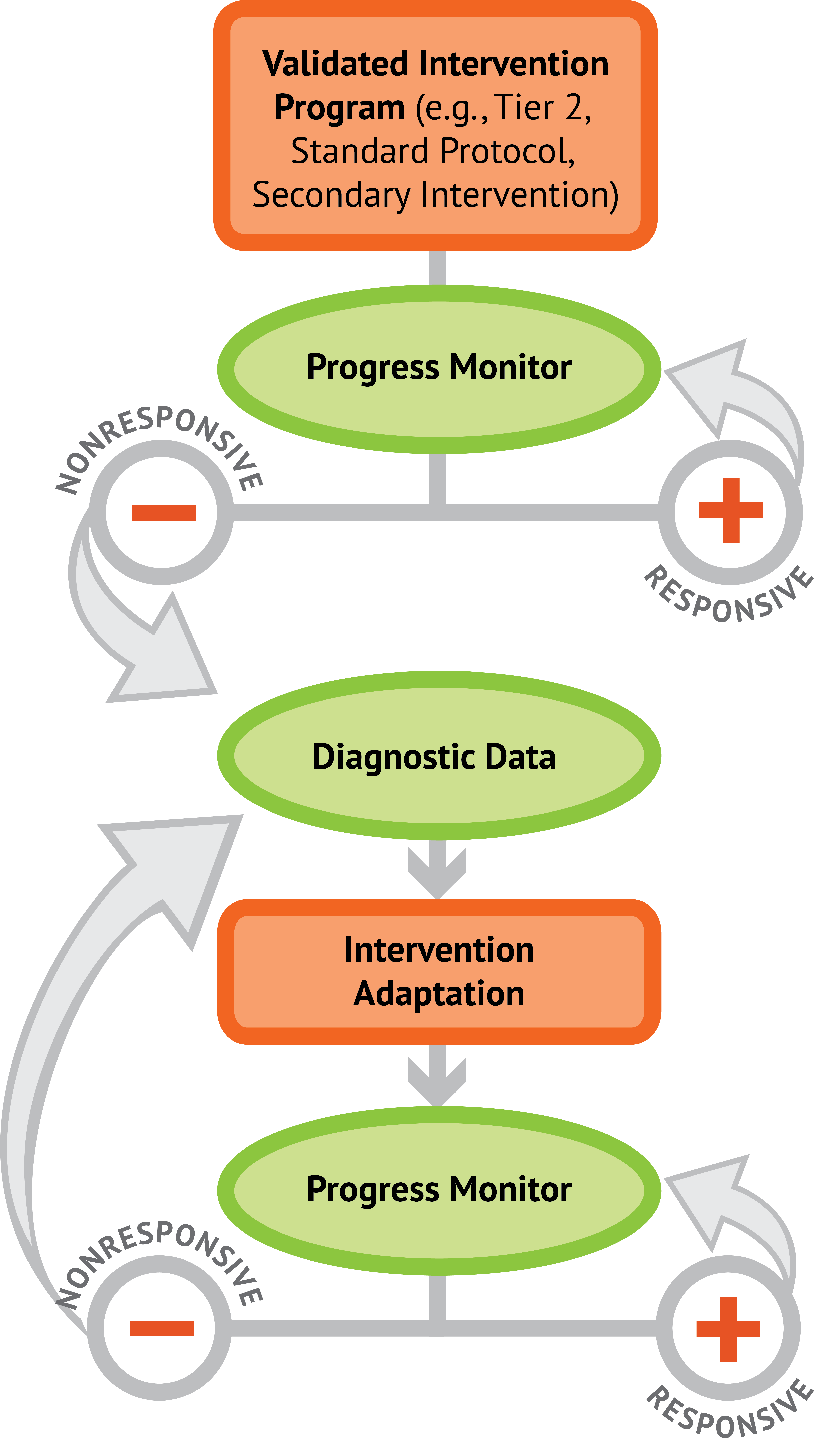Academic: Tier 3
Tier 3 Overview
At the Tier 3 level, students who have not responded to effective core instruction and supplemental supports are provided with intensive, individualized supports. These students are at significant risk for not meeting academic outcomes. At Tier 3, a student-centered team process is utilized to support individual students with intensive needs. Because this process is so resource-intensive in terms of time and staff members, it is critically important that Tiers 1 and 2 are effective so as to minimize the number of students requiring intensive support. It is important to note that students who are having academic difficulty frequently exhibit behavioral challenges as well, which can complicate an already intensive process.
Use of Data
Using a process of data-based individualization, a team of staff that engages in individual problem solving (e.g., RTI, MTSS, or Non-Responder team) will intensify an evidence-based and effective intervention for a student who is not responding. It's important to note that the team has first ensured that intervention is effective (e.g., Has the intervention been implemented with fidelity, or the way it was intended?). The team will identify areas for focus and measure responses to incremental changes systematically and over time. This intensification may be quantitative in nature (e.g., longer, more frequent) and/or qualitative in nature (e.g., altering the way the content is delivered, adjusting adult feedback). The team will also consider if the need is because the student “can’t do” (skill deficit), “won’t do” (motivation and engagement), or has “trouble doing” (difficulty applying or generalizing the skill).
If at any time the team suspects a disability, a special education referral should be initiated. The data collected through intensification can be used in the referral and evaluation processes.

Data-Based Individualization, National Center on Intensive Intervention (n.d.)
Text-only version of the Data-Based Individualization graphic
Elementary Considerations
At the elementary level, student performance level gaps and response to prior interventions drive the intensification process. Factors to consider when intensifying may include:
- Exposure to high quality, effective core curricula and instruction
- Access to core instruction (which can be negatively impacted by attendance issues)
- Behavioral and social-emotional factors
- Fidelity of and access to prior interventions
- Family engagement
Secondary Considerations
At the secondary level, the size of the gap between student performance level and peer levels and/or norms may indicate that the student needs an immediate, intensive intervention, bypassing less intensive targeted, Tier 2 supports. Factors to consider when intensifying may include:
- Exposure to high quality, effective core curricula and instruction
- Access to core instruction (which can be negatively impacted by attendance issues)
- Behavioral and social-emotional factors
- Fidelity of and access to prior interventions
- Family engagement
- Student involvement with intervention development
- History of failure or success in past intervention efforts
Additionally, educators at the secondary level must differentiate between supports that focus on work or subject completion as compared to intensive interventions designed to address skill deficits and academic need. The team leading the intensification process must also consider scheduling barriers that impact the ability to provide supports, as well as previously provided supports and levels of success beginning at the elementary level.
